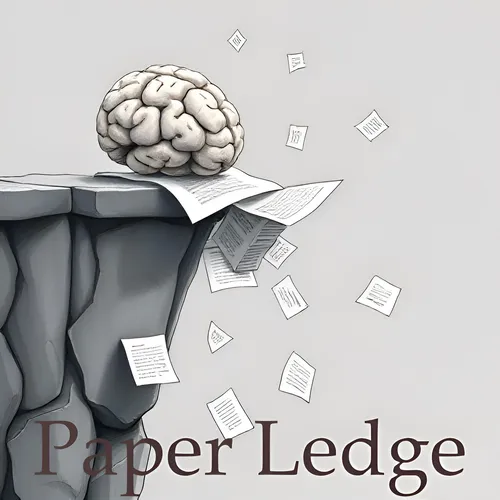Computer Vision - Uni-cot Towards Unified Chain-of-Thought Reasoning Across Text and Vision
- Author
- ernestasposkus
- Published
- Fri 08 Aug 2025
- Episode Link
- https://www.paperledge.com/e/computer-vision-uni-cot-towards-unified-chain-of-thought-reasoning-across-text-and-vision/
Hey PaperLedge crew, Ernis here, ready to dive into some fascinating research! Today, we're tackling a paper about making AI better at understanding visual stories – think of it like teaching a computer to not just see a picture, but to understand what happened before and what might happen next.
The paper's about something called "Chain-of-Thought" reasoning, or CoT for short. Now, CoT is already a big deal in the world of Large Language Models, or LLMs. Imagine you're trying to solve a really complicated math problem. Instead of trying to do it all at once, you break it down into smaller, more manageable steps. That's CoT in a nutshell! It helps AI break down complex questions into a series of easier ones, leading to much better answers. So far, so good, right?
But here's the catch: CoT has been mostly used with text. What about when you need to reason about images and how they change over time? Imagine showing a computer a picture of someone holding an empty glass, then a picture of them filling it with water. The computer needs to understand that filling the glass caused the change from empty to full. That's where things get tricky for existing AI.
The researchers behind this paper realized that current systems struggle to keep track of these visual changes. They can’t quite grasp the "before" and "after" well enough. It's like trying to follow a movie where the scenes are all jumbled up!
That's why they created something called Uni-CoT - Unified Chain-of-Thought. Think of it as a special AI system designed to understand visual stories in a clear and logical way.
Here's the cool part: Uni-CoT uses one single model to both understand images and generate new ones. It's like having a super-powered artist and detective all rolled into one! This is important because it keeps the whole reasoning process consistent and connected. No more jumbled scenes!
But training such a powerful, unified model is a huge challenge. It takes a lot of computing power. So, the researchers came up with a clever solution: a "two-level" reasoning system.
- Macro-Level CoT: This is the "big picture" planner. It figures out the overall steps needed to solve the problem. Think of it as creating an outline for a story.
- Micro-Level CoT: This is where the details come in. It executes each step, focusing on the specific images and changes involved. Think of it as filling in the scenes of the story.
By splitting the work this way, Uni-CoT can be trained much more efficiently. The researchers were able to do all their experiments using a relatively small number of high-end GPUs. That's a big deal for making this kind of research more accessible!
To make sure Uni-CoT learned effectively, they used a special training method. They showed it pictures and text at the same time, teaching it to connect the words with the visual content. It was like reading a comic book and understanding how the pictures and captions work together.
And the results? Uni-CoT blew the competition away on tasks like generating images based on a series of instructions and editing existing images in a logical way. It showed a strong ability to understand and reason about visual information.
So, why does this matter? Well, imagine:
- For artists and designers: AI tools that can help them create and edit images with more precision and control.
- For educators: AI systems that can generate educational materials with complex visual explanations.
- For everyday users: AI assistants that can understand and respond to visual requests more effectively.
Uni-CoT opens up a whole new world of possibilities for AI that can truly "see" and understand the world around us.
Here are a couple of questions that popped into my head:
- Could Uni-CoT be used to create AI that can understand and respond to emotional cues in images and videos?
- What are the ethical considerations of using AI to generate and manipulate images, and how can we ensure that these technologies are used responsibly?
Definitely some food for thought! You can check out the project page and code at https://sais-fuxi.github.io/projects/uni-cot/
That's all for this episode, PaperLedge crew! Keep learning, keep questioning, and I'll catch you next time!
Credit to Paper authors: Luozheng Qin, Jia Gong, Yuqing Sun, Tianjiao Li, Mengping Yang, Xiaomeng Yang, Chao Qu, Zhiyu Tan, Hao Li
